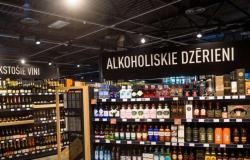The product’s impact on the environment is formed by various factors. The production process, packaging, storage and marketing, as well as the use itself and the utilization of the leftovers must be taken into account. Transport also contributes. If the other factors are similar, then it would definitely be more environmentally friendly to choose a product that is produced nearby, a product whose raw materials are produced here. The less driving, the less imported fossil fuel, the less greenhouse gas emissions. Of course, we cannot fail to mention the social benefits as well – by choosing a local product, we leave our money right here. And if you really want to visit the company to see how it works and creates your favorite product, it is easier (and more environmentally friendly) to reach your destination in Latvia than elsewhere. But, it turns out, it is not always so easy to find a Latvian product.
If, for example, the volume and weight of a food product are usually indicated in the same place (back of the label or in the lower corner of the package), then information on the country of manufacture and/or origin should be sought. And it will not always be possible to find it at all. At least in the food sector, the conditions for disclosure of the country of production/origin differ for different product groups. The country of origin must be clearly indicated for fruits, vegetables, meat, olive oil.
Who are Latvians?
There are several indications that the product is manufactured in Latvia. First of all, a simple inscription “Made in Latvia”. In addition, if there is such an indication, but the raw materials of the main product are not from Latvia, then this must be indicated separately – for example, if the meat for a sausage produced in Latvia comes from Poland, this must be mentioned.
A well-known local product recognition sign is the Green Spoon. It shows both the increased quality requirements, the fact that the product is manufactured in Latvia, and the fact that most of the raw materials (at least 75%) are from Latvia. The Bordeaux spoon is used for high-quality products manufactured in Latvia, the raw materials of which are mostly imported – unfortunately, not all raw materials can be obtained in Latvia. If only because of the climate – for example, black tea will definitely come from another country.
If I think it is not from Latvia?
If the buyer has doubts about the “citizenship” of the food product and suspects that strawberries or cucumbers pretending to be Latvian are actually brought from another country, they can contact the Food and Veterinary Service. The specific case should be described as precisely as possible – where, what product, what merchant and manufacturer and why it seems that the information is not true. Then the service will approach the merchant and check the accompanying documents of the goods, and with this detective work it will be possible to conclude whether everything is in order or whether the merchant has lied intentionally or unintentionally. Both the suspicions of buyers and the first sniffs traditionally appear on the market at the beginning of the vegetable season – buyers are longing for Latvian cucumbers and tomatoes, but unscrupulous traders want to use it and “smear” imported produce, saying that it grew in Latvia. Although this happens from time to time, it cannot be said that it is a massive problem. In 2023, 6% of all tested products turned out to have an incorrectly indicated country of origin.
See more:
The project is financed by the Media Support Fund from the funds of the Latvian state budget. About the program “Green deceived?” SIA “Finger Film Production” is responsible for the content
#SIF_MAF2023






